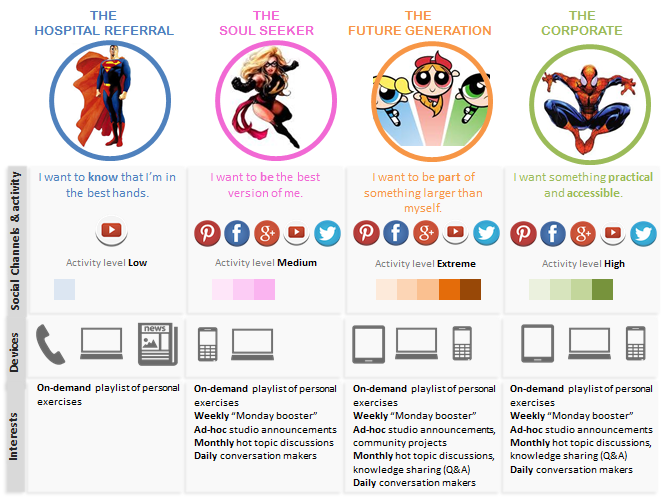
5 Steps to Gamify for Sustained Success
Employees are disengaged, productivity is at an all-time low, customers are unhappy, and you’ve depleted all your resources in an attempt to keep the boat floating.
The sinking ship
But the holes are bigger than the buckets to empty the sinking ship, and you’re quickly running out of options. You’ve tried transitioning to agile, you’ve tried sending your employees on expensive training courses, you’ve tried hiring ‘specialists’ at high cost, you’ve tried cultivating a culture of flexibility and fun — the Google way — and you’ve tried paying big bonuses and other ‘carrot-and-stick’ motivation methods to save the day.
Your organization is heavily bleeding, and you desperately need to do something right now in order to stop the bleeding. It’s a matter of life and death — your ship is sinking, and it’s sinking fast.
So you look around and find gamification. It promises to transform boring into fun, underproductive into hyperproductive, and disengaged employees into loyal ambassadors of your brand.
You give a sigh of relief, Google it and a plug-and-play gamified solution to add points, badges and leaderboards to your system pops up. Perfect!
Problem solved. Or is it?
Probably not and I dare to say definitely not, and probably bigger than before.
Magic only happens in Fairy Tales
Gamification is not points, badges and leaderboards. Anyone looking at plug-in options to magically transform boring into playful and fun by ‘gamifying’ their system with adding points, badges and leaderboards are making a very big, and possibly very expensive, mistake.
It is like putting a band-aid onto a heavily severed limb by an unqualified and untrained civilian. You are probably doing more harm than good, even though you’ve got good intentions and even read an article somewhere or watched an episode of Gray’s Anatomy on TV where you heard that it is important to stop the bleeding. Your intentions are good but you lack depth in knowledge.
Complexity and Chaos
An organization and it’s integrated systems are as complex as a human body and there is a reason why doctors need to study longer than most other professions before they can practice their skill. And even once qualified it is called a practice because they never fully (respectfully said) understand their trade and have to keep practicing to get better.
The human body is simply too complex for any human being to fully comprehend. No two human being are the same, yet they are all similar.
For the same reason no two organizations are the same, yet they are all similar. Similarly, no two gamified solutions are the same, yet they share common characteristics.
Why Gamification fails
Like the example of the mis-diagnosis of the severed limb above, similarly Gamification can only succeed once you fully understand the problem you intend to solve.
We tend to look for solutions the moment we become aware of a problem rather than determining the fault root cause of the problem first. That means you are addressing the symptom, which might give temporary relief, but will not get rid of the problem.
Design for Success
Gamification works when it is approached like any other successful project, and below are the most important steps in the iterative process.
Gamification for Success
Step 1 — Problem Analysis
In most cases, the problem is not where it hurts the most, so it makes sense to spend a bit more time trying to find the source of the problem through various research techniques, such as participatory research, shadowing, or my personal preferenance — getting your hands dirty having a look yourself by getting involved in the project.
I’ve never successfully identified the fault root cause of a problem without being part of the team on some level. Having been an auditor in the past, asking people questions as an outsider vs having a look by doing it yourself gives very different results.
The first probably will give you the symptom, the second will more likely lead you to the fault root cause.
A tool to help you identify your focus area is a gamestorming (not to be confused with gamification) game called “Speedboat”. Alternatively, or additional to that, shadowing (observation) is a method that has been used successfully in lean manufacturing, but can be applied to knowledge work environments as much as to manufacturing.
Step 2 — Analyse your Players
The users, or players, are the essence of your gamified solution, so this is one of the most important parts of any solution — whether it is gamification or product design.

Persona Summary
An organization is a group of individuals working together. Without understanding your players, you’re not able to design for success. Depending on your problem, your players might be different, so don’t first start analyzing users as it might potentially be a waste of time.
Firstly categorize your players into the four main player types of your choice (Collaborators, Explorer, Achievers and Competers; DISC profiling or another methodology of your choice), then define what constitutes value for each, based on intrinsic rather than extrinsic motivators.
It’s been proven over and over again that any extrinsic motivation, whether it is a bonus, a holiday, or paid leave, has a very short lifespan after which it becomes expected rather than making employees happy.
Tools to use at this stage of the process includes empathy mapping, journey mapping (adapted to include the phases of a game like onboarding and mastering) and persona creation.
Step 3 — Define your success criteria
Only once you got to know your user a bit better is it possible to define what success will look like.
How will you know that you’ve succeeded? Maybe once you’ve reached a financial milestone, or have an increase in customer loyalty and referrals, or maybe able to deliver products and services faster?
Tried and tested tools to help you includes setting SMART goals and using the Balanced Scorecard method. From the Innovation Games website, the “Remember the future” game is very handy, and I’ve recently seen an in-house developed template called the Brand Engagement Wheel which identifies the main items for engaging your audience and taking it a step further by doing a quick feasibility analysis and assigning ownership right away.
Step 4 — Define your Solution
Only now is it time to start thinking of a solution and where and how to gamify. Doing this step earlier might feel faster, but in the end of the day it will cost you much more.
Process and people first, tools later.
The key to successful problem solving is not to automate too early. Like wireframes and mockups help to build a website faster, manual gamification is a much cheaper way to get the solution right and allow you to make changes based on test feedback from actual users.
The core purpose of gamifying any system is to make people happy.
Happy people do good work, which means higher productivity and better customer service, which in turn leads to happier customers, which ultimately translates to higher profitability for the company. Win-Win.
In most cases employee happiness doesn’t have much to do with the systems, but rather more about relationships with their team as well as management. And if I had to choose only one ingredient for a good relationship it would be good communication.
Points, badges and leaderboards are a form of feedback for improved communication, but it is far from enough to ‘gamify’ a system. It lacks meaningful choices, voluntary contribution, an element of surprise (which is responsible for the addictiveness to games), to name but a few of the other ingredients of a gamified solution, and mostly, it doesn’t guarantee fun, except if you are one of the 10% of players categorized as Achievers.
To successfully gamify a system you don’t need technology.
I’ve managed to gamify a classroom without any technology, and I’ll risk saying that I was more agile and adaptable to my ‘clients’ needs without the restrictions that comes with technology.
The best tools I use are sticky notes (always carry them around with me) and paper prototypes. Other ways to gamify includes adding music (sound), food (smell) or movement.
Ultimately a good game experience is a sensual experience, meaning it involves all the senses.
Step 5 — Review and Respond
The final step in the process is to at a predefined milestone review your metrics against your defined success criteria and make the necessary changes, and share your findings or improvements.
The tool I like the most to gather the player’s perceptions and ideas is a game called “I like, I wish, I wonder”, and some form of analytics to look at the actual results.
The one cannot be viewed without the other, as perception is probably more important in any change program than the actual results.
Even if you have the stats to prove something works, if the people using it don’t like it, it won’t last.
Summary
Gamification works, but only if it is implemented correctly and with the necesseary analysis. Game design studios spend millions to get games right, it is never a quick-fix. They’ve spent years researching user behavior and what a good game consists of.
To expect a successful gamified solution simply by adding Points, Badges and Leaderboards is a misunderstanding, and it is an effective motivation for only about 10% of the audience.
Successful gamification design requires thought, a lot of planning, and many iterations to get it right. And once you finally get it right, it’s time to change it to keep it interesting.
Originally published on Medium: https://medium.com/p/5-steps-to-gamify-for-sustained-success-b80473f2b72f
